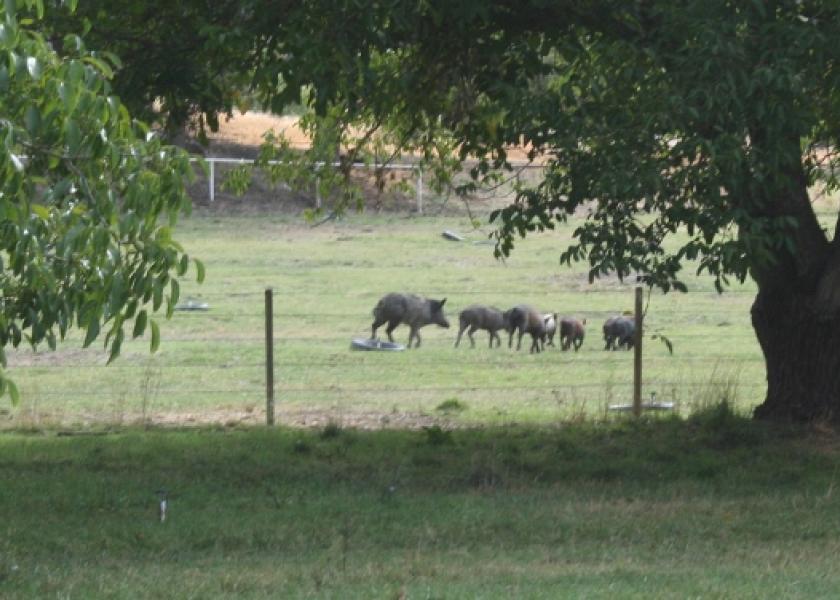APHIS Tests Bait Stations for Feral Swine

USDA’s Animal and Plant Health Inspection Service (APHIS) recently conducted the first of two field trials of a sodium nitrite toxic bait on free-roaming feral swine. Feral swine are an invasive species causing extensive and costly damage and disease threats to crops, property, native ecosystems, livestock health, and human health.
Feral swine can be difficult to eradicate in large numbers, so APHIS’ Wildlife Services (WS) program began testing the effectiveness of using sodium nitrite baits to selectively remove the animals. WS is conducting these trials under an U.S. Environmental Protection Agency authorized Experimental Use Permit (EUP). The purpose of the EUP is to evaluate the effectiveness of the bait, the ability of the bait stations to limit non-target species access to the bait, and risks to non-target species.
As part of the trials, WS places placebo bait into specially crafted bait stations designed to prevent access by non-target wildlife. Once confirmed with motion-activated cameras that feral swine are using the bait stations, WS replaces placebo baits with sodium nitrite toxic bait.
“Results from the first field trial in Texas showed the sodium nitrite bait was lethal to 70 percent of the feral swine in the vicinity of the bait stations and that no non-target species accessed the bait from the bait stations,” states Dr. Kurt VerCauteren, a WS Supervisory Research Wildlife Biologist. “The bait and the bait stations performed well, however we also observed that if feral swine dropped bait crumbs outside of the bait stations other species could eat the crumbs, causing a risk to non-target species. We documented in our environmental assessment that this could be a concern, and we know we can modify the bait form and consistency to lessen these risks.”
WS confirmed by trail cameras that no non-target species accessed the bait directly from bait stations. Only non-target animals (171 birds and 8 raccoons) that accessed crumbled, spilled bait dropped by feral swine were found dead near 14 bait sites. The primary bird species impacted included white-crowned sparrows and red-winged blackbirds.
Researchers plan to conduct additional studies to ensure that the bait modifications mitigate hazards to non-target animals. To prevent spillage of the bait by feral swine, WS researchers and the bait manufacturer are reformulating the bait to make it more palatable and less likely to crumble when eaten. The new bait formulation will be evaluated in subsequent field trials.
“Wildlife Services takes the selection and use of toxic baits for use in wildlife damage management very seriously,” states WS Deputy Administrator Janet Bucknall. “With the development of any new tool, there are always evaluations and modifications. We want to assure our stakeholders and the public that we are committed to developing and using tools that are safe, effective and socially responsible.”
Sodium nitrite (NaNO2) is a meat preservative commonly used to cure meats such as sausage and bacon. When eaten in high doses over a short period of time, it is toxic to feral swine. The mode of death is similar to carbon monoxide poisoning. Once enough sodium nitrite bait is eaten, the feral swine becomes faint, is rendered unconscious, and quickly dies. In most cases, feral swine die within 2.5 to 3 hours after eating a lethal dose.
WS’ studies on sodium nitrite were conducted in collaboration with state and university partners, including Texas Parks and Wildlife.
The development of tools and techniques for use in feral swine damage management supports the National Feral Swine Damage Management Program— a nationally-coordinated effort among Federal, State, Tribal and local entities to manage feral swine damage and stop their spread. More than 6 million feral swine are located in at least 35 states across the United States. Their damages to agricultural crops alone are estimated at $190 million each year.
More information about the sodium nitrite toxic bait for feral swine, please see our factsheet.







